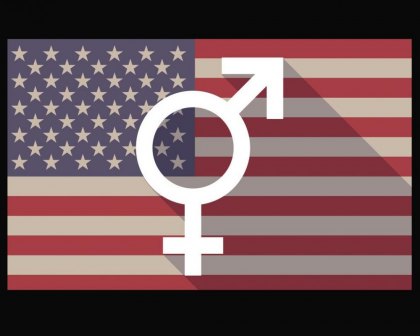Teen's case sheds light on transgender issues

While the school district could ultimately take the case to the Supreme Court, for the time being, Whitaker is victorious. And the court case, which can be read online, offers a look inside the world of a transgender teen. This is Ashton Whitaker’s story, as recounted by the Judge Ann Claire Williams, U.S. Court of Appeals for the 7th Circuit:
Coming out: Born a girl, Whitaker told his parents when he was in the eighth grade that he was transgender and a boy. The next year, as he entered George Nelson Tremper High School, he cut his hair and began to wear masculine clothing.
Making the transition: He began to see a therapist, who diagnosed him with gender dysphoria, defined by the American Psychiatric Association as “a marked incongruence between one’s experienced/expressed gender and assigned gender." He began hormone replacement therapy.
For the most part, his transition was accepted. During a youth orchestra performance, for example, he wore a tuxedo.
The boys' room: In Whitaker's sophomore year, he and his mother met with school officials to ask that he be allowed to use the boys' restrooms. He had already transitioned and felt continuing to use the girls' restroom would only draw prolonged attention to him. The school's administration denied his request.
The consequences of school policy: Whitaker worried that if he went to the boys' restrooms, he could be disciplined. This could hurt his chances of getting into college. He drank little water and "attempted to avoid using any restroom at school for the rest of the school year," the court case recounted.
But restricting his water intake exacerbated his health problems. Whitaker has a condition in which he is susceptible to fainting or seizures if dehydrated. Instead of restricting his water intake, his doctors wanted him to drink six or seven bottles of water and a Gatorade daily.
Beyond that, he began to suffer "stress‐related migraines, depression and anxiety because of the policy’s impact on his transition and what he perceived to be the impossible choice between living as a boy or using the restroom. He even began to contemplate suicide," the court decision said.
A bold move: As he began his junior year, Whitaker simply started using the boys' restroom. He did so for six months without incident. But in February 2016, a teacher spotted him washing his hands in the boys' restroom and reported it to the administration.
Whitaker was told he could use only the girls' restrooms or a gender-neutral restroom in the school's main office. At this point, a school administrator said that Whitaker was still listed as a female, and "to change those records, the school needed unspecified 'legal or medical documentation,'" the court decision recounted. Letters from Whitaker's pediatrician were not enough. In order to use the boys' restroom, the school maintained that Whitaker "would have to complete a surgical transition...a procedure that is prohibited for someone under 18 years of age ...Further, not all transgender persons opt to complete a surgical transition, preferring to forgo the significant risks and costs that accompany such procedures."
An ongoing issue: The court case said Whitaker felt that going back to the girls' bathroom would be in contradiction to his transition. He also didn't want to be singled out by having to go to the gender-neutral bathroom. So he continued going to the boys' restroom, but was anxious and depressed. He was removed from class on several occasions by administrators who wanted to discuss his violation of the policy. School security officers were told to monitor Whitaker to make sure he did not go to the boys' restroom. They offered a second single-user gender neutral bathroom for his use. It could be opened with a key, which only Whitaker was given. The restrooms were nowhere near his classes. Whitaker missed class time and felt stigmatized.
A toll: Whitaker contended "he was subjected to other negative actions by the school district," the case said, "including initially prohibiting him from running for prom king,referring to him with female pronouns, using his birth name, and requiring him to room with female students or alone on school‐sponsored trips. Furthermore, Ash learned in May 2016 that school administrators had considered instructing its guidance counselors to distribute bright green wristbands to Ash and other transgender students so that their bathroom usage could be monitored more easily. Throughout this litigation,the school district has denied that it considered implementing the wristband plan."
In court: Whitaker's fight to use the boys' bathroom prompted a legal battle. In September 2016, a federal court found that Whitaker should be able to use the boys’ restrooms -- and without surveillance by school officials. This week, the appellate court withheld that ruling. The decision found that transgender students are protected by the U.S. Constitution.
In the decision, Judge Williams noted that the school system had not demonstrated that it would suffer harm from complying with the federal court order. Before going to court, the order said, "Ash used the bathroom for nearly six months without incident. The school district has not produced any evidence that any students have ever complained about Ash’s presence in the boys’ restroom."
See the decision on the website for the U.S. Court of Appeals, Seventh District.
Related:
Some schools embrace transgender policies
An apology for the Lavender Scare
Follow StudyHall.Rocks on Twitter.
If you would like to comment, give us a shout, or like us on Facebook and tell us what you think.

